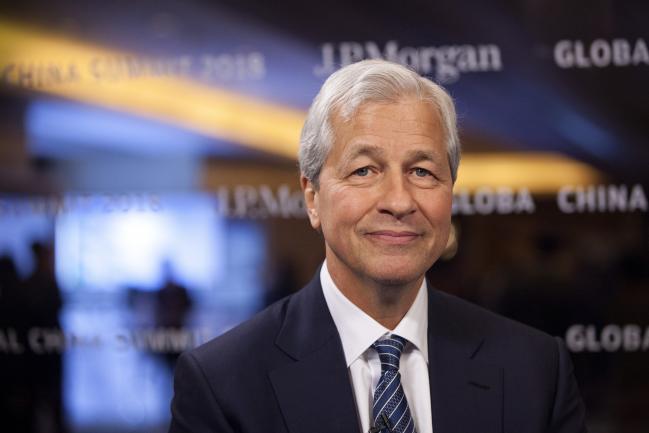 © Bloomberg. Jamie Dimon, chief executive officer of JPMorgan Chase & Co., poses for a photograph ahead of a Bloomberg Television interview on the sidelines of the JP Morgan Global China Summit in Beijing, China, on Tuesday, May 8, 2018. Photographer: Giulia Marchi/Bloomberg
© Bloomberg. Jamie Dimon, chief executive officer of JPMorgan Chase & Co., poses for a photograph ahead of a Bloomberg Television interview on the sidelines of the JP Morgan Global China Summit in Beijing, China, on Tuesday, May 8, 2018. Photographer: Giulia Marchi/Bloomberg(Bloomberg) — Jamie Dimon just got a big-name backer in his bet that benchmark U.S. yields are heading towards 4 percent.
Franklin Templeton bond chief Michael Hasenstab predicts rising inflationary pressures, an onslaught of U.S. bond supply and the Federal Reserve’s moves to pare its balance sheet will conspire to drive up benchmark rates.
“That’s a perfect storm for putting upward pressure on Treasuries,” Hasenstab said in an interview with Bloomberg TV.
Dimon, JPMorgan’s chief executive officer, made a similar call earlier, putting him at the vanguard of a bearish camp with Hasenstab in a debate over where Treasury yields are headed after they breached 3 percent last month. By contrast, the median forecast of 60 analysts surveyed by Bloomberg sees the rising to 3.14 percent by year-end. Only one has it above 4 percent.
“It might force the 10-year up” if the Fed boosts short-term rates more than expected, Dimon said in an interview with Bloomberg Television’s Stephen Engle in Beijing, referring to the yield on 10-year Treasury notes. “You can easily deal with 4 percent bonds and I think people should be prepared for that.”
Hasenstab, known for big conviction trades, has been bracing for rising U.S. rates since at least 2016. He added to his short Treasury position this year, pushing average duration in the flagship $38 billion Global Bond Fund he manages to the most negative ever at -0.85 years, according to public filings. The negative duration generates profits when bonds fall and yields increase.
After three years of outflows and lackluster returns, the Treasury bet has helped Hasenstab’s fund post a 1 percent gain in 2018, according to data compiled by Bloomberg. The money managers are “comfortable” with the short Treasury position and don’t plan to increase it, Hasenstab said.
The 10-year Treasury yield hasn’t traded at 4 percent since April 2010. Within six months of touching that level, it fell back to 2.33 percent.
To Hasenstab, the confluence of recent events mean higher yields are now consistent with the U.S. economy.
The Fed’s preferred inflation gauge just hit the central bank’s 2 percent target for the first time in 13 months. The U.S. Treasury is issuing ever-larger amounts of debt to finance a budget deficit that’s poised to eclipse $1 trillion by 2020. All the while, the Fed itself is paring back the $2.4 trillion hoard of government bonds that it amassed after the financial crisis as part of extraordinary monetary stimulus.
A recovering economy and rising yields will feed a widening rate differential to Japan and Europe that will continue to bolster the dollar, Hasenstab said.
“In a normal situation with U.S. growth at 3 percent, inflation at 2 percent, the 10-year yield would be at 4.5 to 5 percent,” Hasenstab said. “We’re not completely in a normal situation but we’re getting closer to that state and so certainly above 4 percent, I think the U.S. economy could handle.”
(Adds Templeton bond returns in seventh paragraph.)
Fusion Media or anyone involved with Fusion Media will not accept any liability for loss or damage as a result of reliance on the information including data, quotes, charts and buy/sell signals contained within this website. Please be fully informed regarding the risks and costs associated with trading the financial markets, it is one of the riskiest investment forms possible.
Source: Investing.com



























